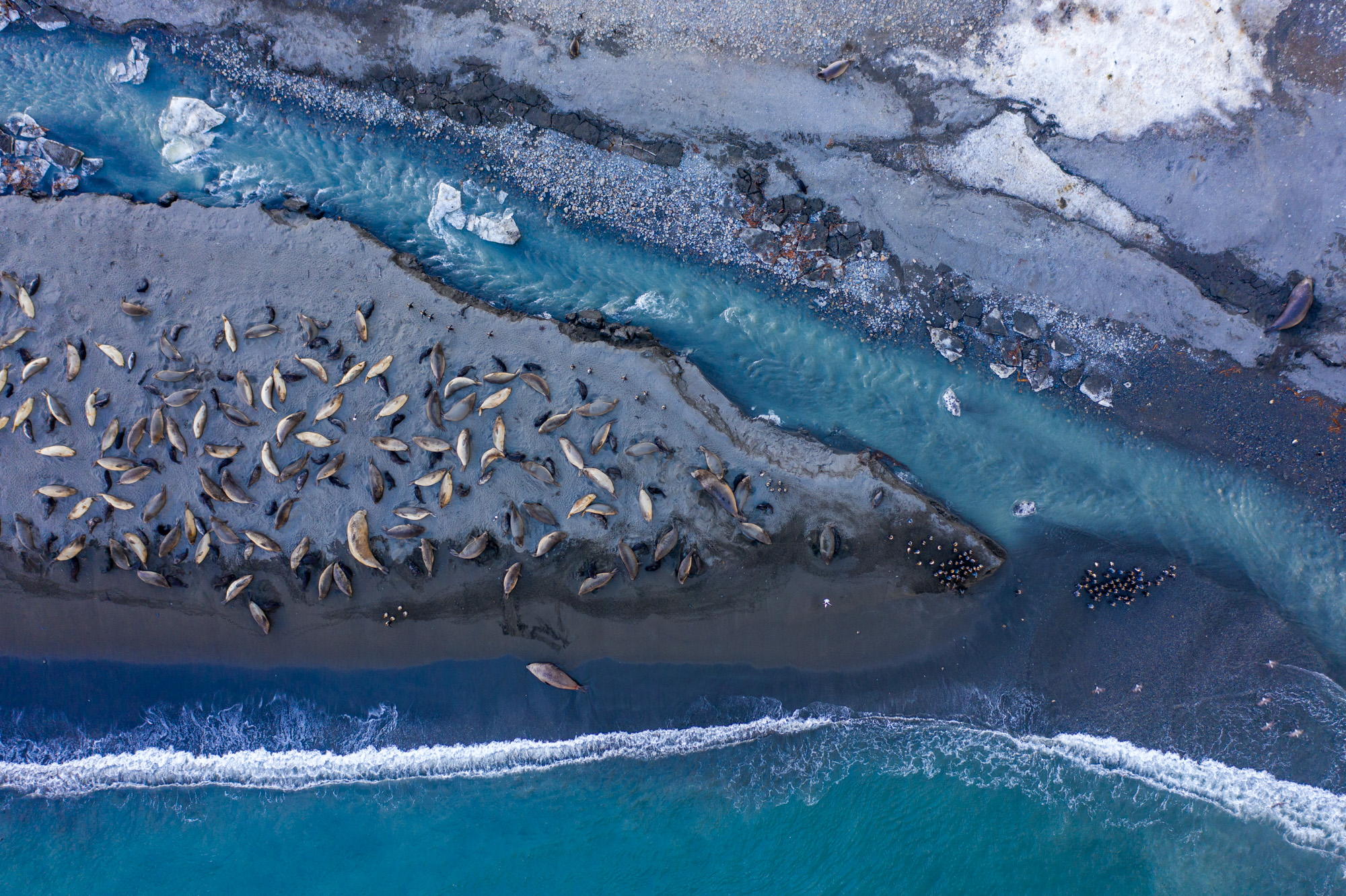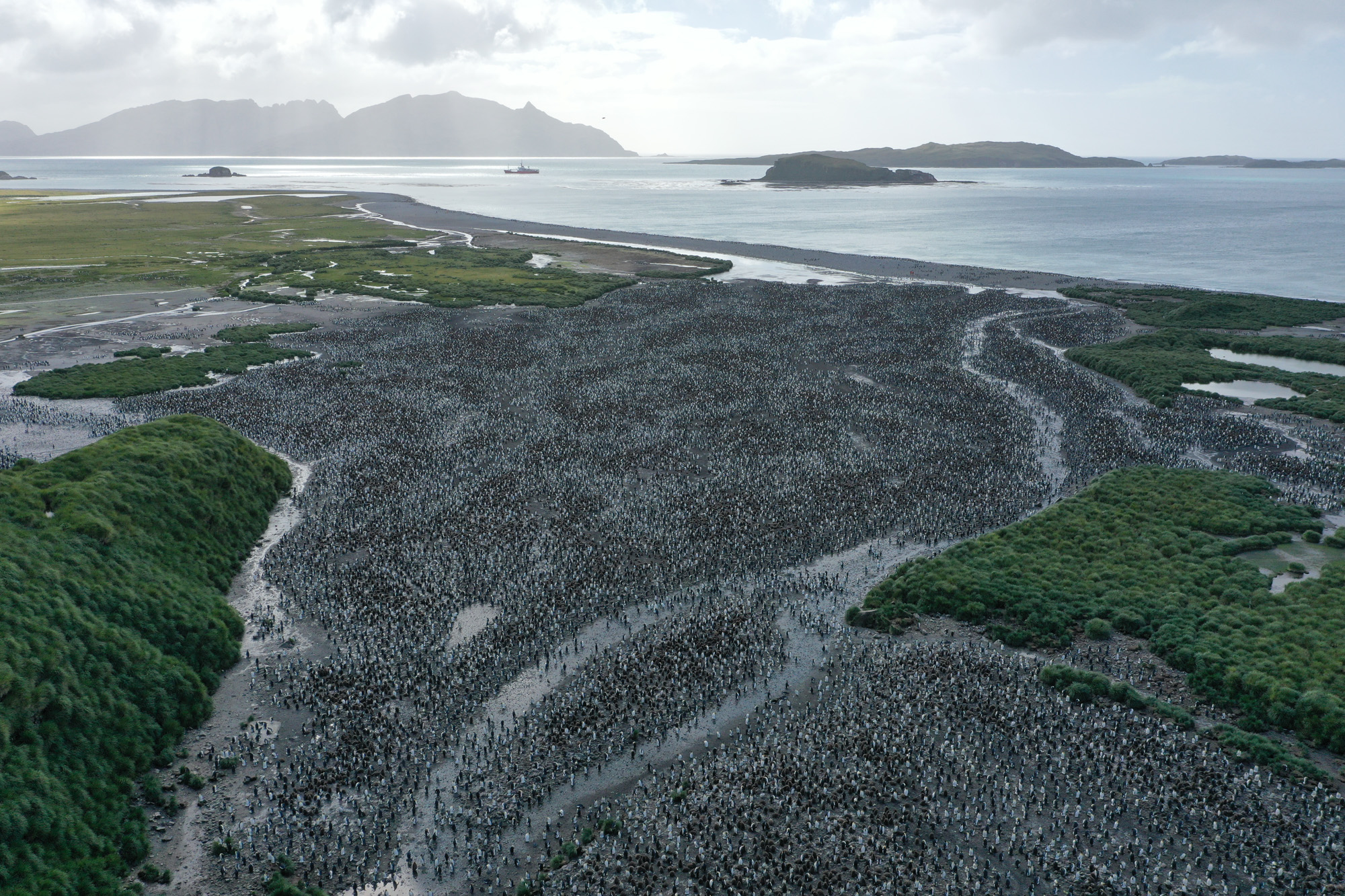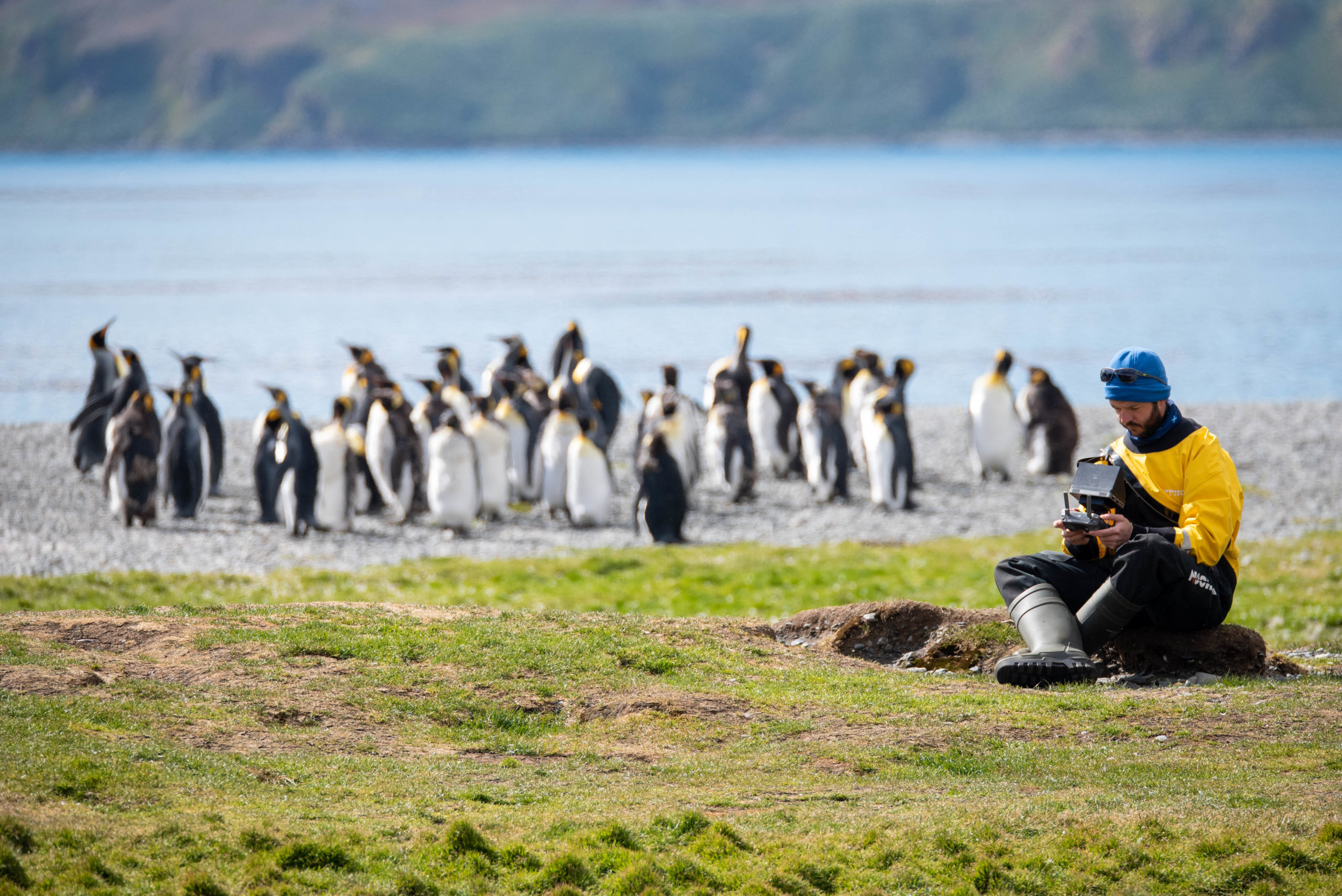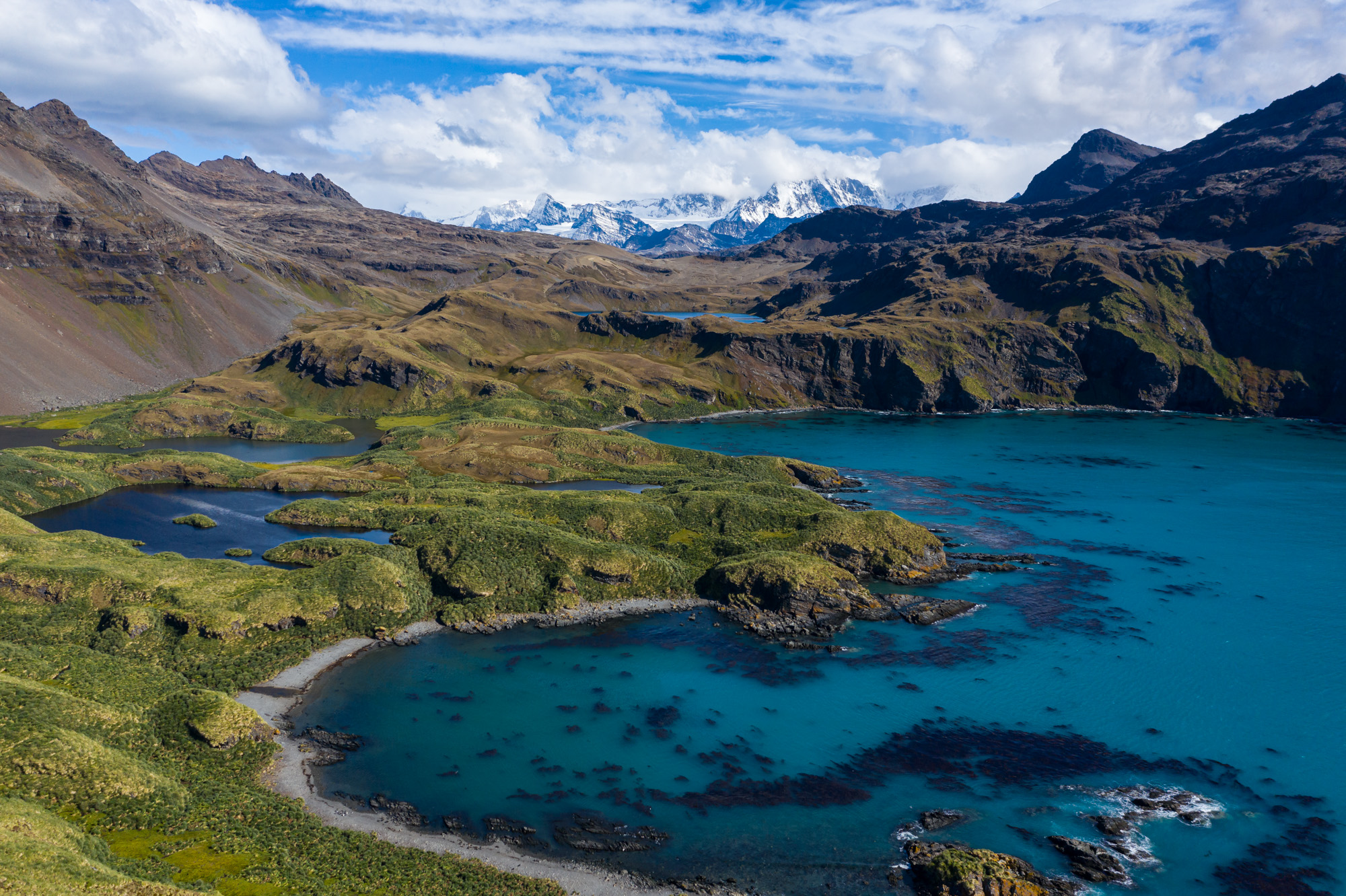An eye in the sky: monitoring animal colonies using drones in the subantarctic
Scientists have conducted the first population study of penguins, seals and albatross using Unoccupied Aerial Vehicles (UAVs) or drones on the subantarctic South Georgia and the South Sandwich Islands to understand how factors such as climate change and fishing are impacting the delicate ecosystems.
The research is published this month in Frontiers in Marine Science and carried out on South Georgia and South Sandwich Islands; located in the Southern Ocean approximately 1,300 km to the east of the Falkland Islands. These isolated islands are home to millions of penguins, seals and seabirds. Until recently, they could only be regularly monitored by researchers during ground-based surveys, with a focus on colonies that were more easily accessible and small enough to be accurately and safely studied.

Recent developments in technology have enabled the scientists to conduct safe, accurate, large-scale population surveys using UAVs, without damaging the environment or disturbing the animal population.
Lead Author John Dickens, Zoological Field Assistant at the British Antarctic Survey said:
“Over the course of a single season, we were able to survey populations of southern elephant seals that haven’t been studied in 25 years, count nesting and fledgling wandering albatross on islands which are infrequently monitored, and collect imagery of some of the largest penguin colonies in the world which will provide us with the most detailed census that we have of these populations.”

Dr Tom Hart, Penguinologist at the University of Oxford said:
“UAVs are fantastic in that they allow us to reach areas safely, even if we only have a short time. If a surf beach is too rough to land on, we can often still fly it. We can therefore count far more colonies in less time. UAV surveys allow us not only to count, but give a position of every nest in that colony. It makes these surveys immensely sensitive to environmental change and more useful into the future.”
Dr Martin Collins, South Georgia Science Manager at the British Antarctic Survey said:
“The use of UAVs has enabled us to survey far more species and colonies than previously possible, with greater accuracy, less disturbance to the wildlife and less risk to the scientists.”
The research took place between October 2019 and January 2020 over seven locations on South Georgia and the South Sandwich Islands. The scientists used a commercially available quadcopter which was manually piloted over penguin, seal and seabird colonies, at a suitable height so that it would not cause any disturbance, and set to take photographs every few seconds. These photographs were later stitched together to form a large orthomosaic, or aerial map of the area from which an accurate and validated count of the animals could be made from the safety of a desk.

South Georgia has the largest population of southern elephant seals in the world and the researchers carried out 50 UAV flights in five locations during the pupping season. It was the first population census at St Andrews Bay and Hound Bay in 25 years. At St Andrews Bay, the data from the flights suggests the peak of the pupping season took place on 25 October with a total of 6,074 cows recorded across the beach, with 396 bulls, 5341 suckling pups and 155 weaned pups.
Huge numbers of king penguins live on the archipelago, with an estimated 250,000 breeding pairs alone on St Andrews Bay. Four species of penguin, including king, macaroni, Adélie and chinstrap, were surveyed using the UAVs, from land at South Georgia, and from a yacht at the South Sandwich Islands. The aerial surveys at St Andrews Bay were successful and a census of the entire population is scheduled. The study also highlighted the limitations of UAV imagery with macaroni penguins proving challenging to survey due to the habitat in which they nest, with much of the colony being obscured by large tussock grasses.
Wandering albatross have been studied extensively on South Georgia and previous surveys have shown a decline in their population. The UAV aerial surveys provide some of the first breeding success data in recent years for islands in the Bay of Isles. Nine islands, with a total area of over 3km2, were surveyed using a UAV, with a total of 143 wandering albatross chicks and 48 adults identified from the images.

Due to the success of the project, future surveys are already planned. This will enable scientists to conduct large scale population assessments of the island’s iconic land-based marine predators, and gain and understanding of their response to the changing climate and environment in this critical ecosystem in the Southern Ocean.
Developing UAV Monitoring of South Georgia and the South Sandwich Islands’ Iconic Land-Based Marine Predators by John Dickens, Philip R. Hollyman, Tom Hart, Gemma V. Clucas, Eugene J. Murphy, Sally Poncet, Philip N. Trathan and Martin A. Collins (2021) is published in Frontiers in Marine Science: https://doi.org/10.3389/fmars.2021.654215